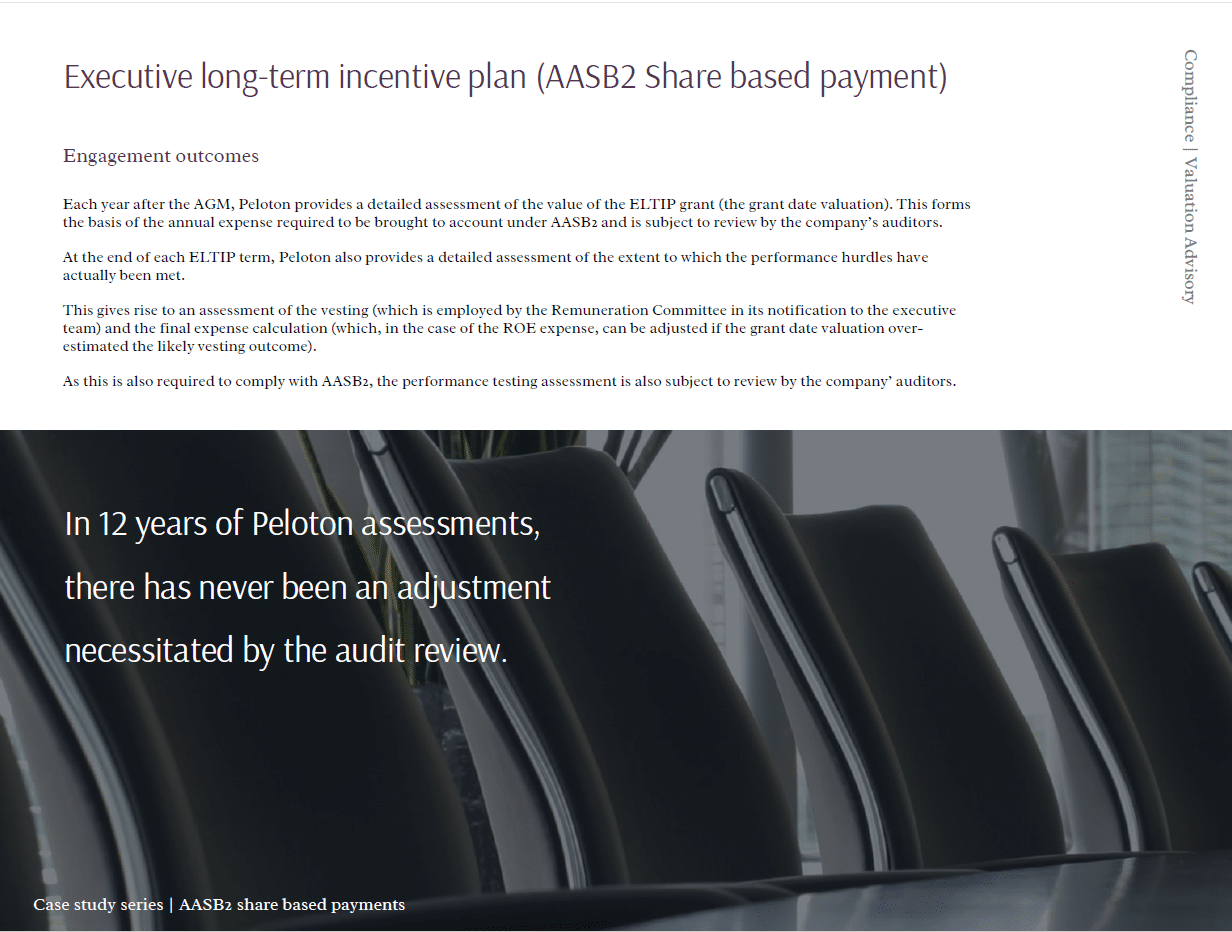The need for an executive long term incentive plan
Each year, an ASX300 company offers an executive long term incentive plan [“ELTIP”] to its senior executive team as part of their remuneration package.
This is commonplace and ELTIP is one of three remuneration components (the other two being salary and short term incentives).
The ELTIP details are set out in the remuneration report and the ELTIP grant to the Managing Director is subject to shareholder vote at the Annual General Meeting [“AGM”].
Similar to many ASX listed companies, the ELTIP comprises ‘performance rights’ which behave like zero exercise price options with performance hurdles which are designed to align the interests of the executive team with shareholders.
The performance rights only vest (i.e. the underlying shares only issue) if the performance hurdles are met (a sliding scale is employed but a minimum performance outcome of 50% is required for 50% of the performance rights to vest).
The ASX300 company employs two performance hurdles:
- A relative Total Shareholder Return [“TSR”] hurdle which requires the company to have at least achieved the 50th percentile of three year TSR of the ASX300 cohort
- An absolute Return on Equity [“ROE”] hurdle set by the company’s remuneration committee and based on the company’s strategic plan
As the ELTIP is a form of share based payment, AASB2 requires that the company expense the fair value of the instruments over the term of the plan (three years).
Peloton undertakes a grant date valuation and periodic performance hurdle testing in order that the company can comply with the requirements of AASB2.
Valuation issues and considerations
The design of the ELTIP – particularly with regard to the selection of performance hurdles – can be seen as a grant of two distinct zeroexercise price options.
The probability of achievement of the performance hurdles as at the grant date is a critical determinant of the value of each tranche of options.
Peloton must assess the likely TSR of each of the ASX company and all of its ASX300 peers.
In addition, Peloton must assess the likely ROE of the ASX company.
It is reasonably well known that the Black Scholes Option Pricing Model does not provide a reliable valuation of the performance rights (options) and the achievement of the ROE target is subject to a range of uncertainties.
Peloton solution
Peloton delivers a grant-date valuation shortly after the ELTIP grant (and AGM) and before the half-year reporting deadline.
Peloton also provides a performance hurdle test after the expiry of the term of each ELTIP period. This is delivered immediately after the year-end expiry date of the ELTIP.
Given the lack of reliability of the Black-Scholes Option Pricing Model in these circumstances, a proprietary financial model developed by Peloton is employed which (using Monte Carlo analysis) assesses the probability of both the relative TSR outcome and the ROE outcome.
In the case of the TSR outcome, the financial model projects the likely TSR of each of the ASX300 constituents across the three-year term of the ELTIP.
The model considers the historical variability of share prices, dividend growth and other factors before ranking each of the projected TSR outcomes in order to determine the likely ranking of the ASX company.
Given the sensitivity of the expense and vesting outcome, the share prices employed at the grant date and expiry date of the ELTIP are assessed using a variety of volume-weighted average prices [“VWAP”].
A 5, 10 and 20-day VWAP is employed as set out in the ELTIP rules agreed by the company Remuneration Committee.
Engagement outcomes
Each year after the AGM, Peloton provides a detailed assessment of the value of the ELTIP grant (the grant date valuation). This forms the basis of the annual expense required to be brought to account under AASB2 and is subject to review by the company’s auditors At the end of each ELTIP term, Peloton also provides a detailed assessment of the extent to which the performance hurdles have actually been met.
This gives rise to an assessment of the vesting (which is employed by the Remuneration Committee in its notification to the executive team) and the final expense calculation (which, in the case of the ROE expense, can be adjusted if the grant date valuation over estimated the likely vesting outcome).
As this is also required to comply with AASB2, the performance testing assessment is also subject to review by the company’ auditors.
